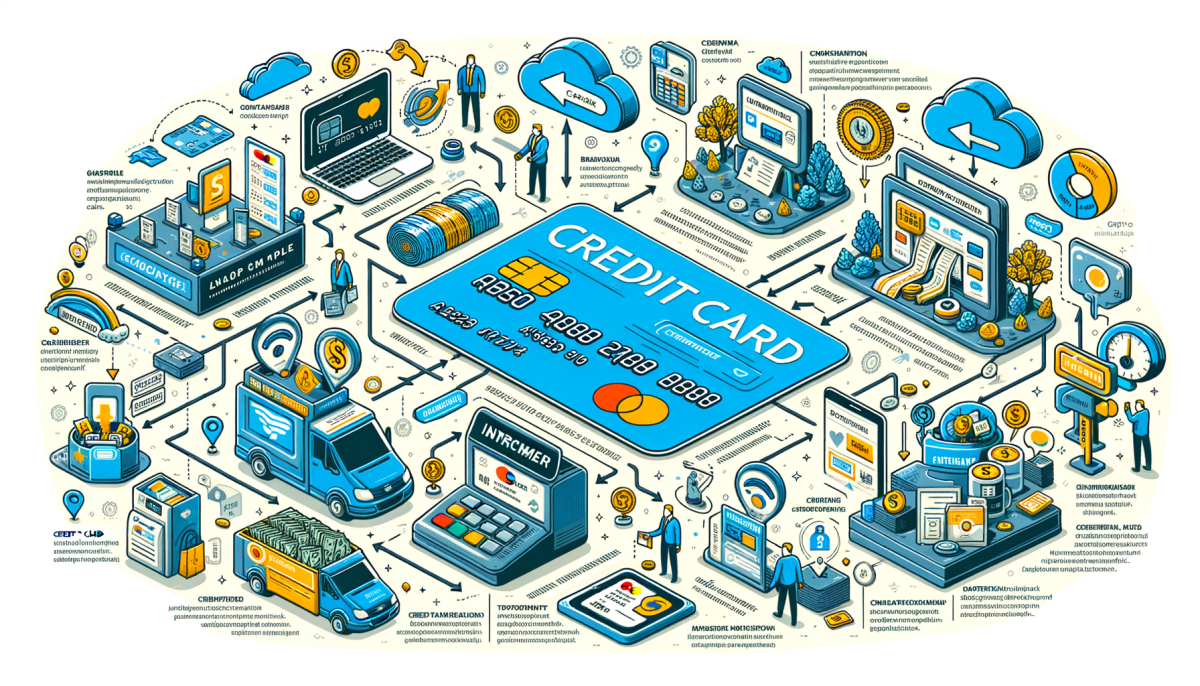Credit cards have become an essential financial tool for millions of people worldwide, offering convenience, security, and the potential for rewards. However, to effectively wield this powerful instrument without falling into debt traps, one must comprehend the underlying mechanics of credit cards. This guide is designed to demystify the complexities associated with credit cards, enabling users to make informed decisions and manage their finances responsibly. We will start by decoding the fundamental components of credit cards and then delve into the intricacies of interest rates and fees that can impact your wallet.
Decoding Credit Card Basics
Credit cards are essentially a form of revolving credit issued by financial institutions that allow cardholders to borrow funds within an established credit limit for purchases or cash advances. When you use a credit card, you’re making a promise to repay the borrowed amount along with any applicable interest and fees. Every card comes with a billing cycle, typically lasting 28-31 days, at the end of which the card issuer sends a statement detailing the transactions, outstanding balance, and the minimum payment due.
One of the key terms associated with credit cards is the Annual Percentage Rate (APR), which represents the cost of borrowing on the card, expressed as a yearly rate. It’s important to understand that while some cards offer a grace period—allowing a certain number of days to pay off the balance before interest accrues—others might start charging interest immediately on purchases or cash advances. Additionally, credit cards often provide various benefits and rewards programs that incentivize spending, such as cashback, points, or miles, which can be redeemed for various goods or services.
Credit limits are another fundamental concept. This is the maximum amount you can charge to your credit card, and it’s determined by the issuer based on factors like your creditworthiness and income. It’s critical to manage your credit utilization ratio—the proportion of your credit limit that you use—as it can significantly impact your credit score. Generally, it’s advisable to keep this ratio below 30% to maintain a good credit rating. Exceeding your credit limit can result in additional fees and can harm your credit score.
Exploring Interest Rates & Fees
Interest rates on credit cards can vary significantly based on the cardholder’s creditworthiness and the type of card. Typically, rewards cards and cards with special features tend to have higher APRs. It’s crucial to know whether your card has a fixed or variable rate. Fixed-rate cards offer the same interest rate over time, while variable-rate cards are tied to an index rate, such as the prime rate, and can fluctuate with market conditions.
Fees are another critical aspect to consider when using credit cards. Common fees include annual fees, cash advance fees, late payment fees, balance transfer fees, and foreign transaction fees, among others. These fees can add up quickly and negate any rewards earned, so it’s essential to understand the fee structure of your credit card and how to avoid unnecessary charges. For instance, paying your balance in full each month helps you avoid interest charges, while timely payments prevent late fees.
Understanding how interest compounds can also save you a significant amount of money. Many credit cards calculate interest on a daily basis, meaning that interest is added to your outstanding balance each day. This compounding effect can lead to an exponentially increasing debt load if not managed carefully. To mitigate this, make more frequent payments or pay more than the minimum due each month. Additionally, taking advantage of introductory 0% APR offers on purchases or balance transfers can provide a window to pay down debt without accruing interest.
Navigating the world of credit cards can be a daunting task, but with a clear understanding of their mechanics, you can harness their benefits effectively while avoiding common financial pitfalls. By familiarizing yourself with credit card basics, such as billing cycles and credit limits, and being mindful of interest rates and fees, you can develop a strategy for responsible credit card use. Remember, the key to financial well-being with credit cards lies in informed and disciplined management. With the insights from this guide, you can confidently approach credit card usage as a savvy consumer, maintaining control over your finances and credit health.
